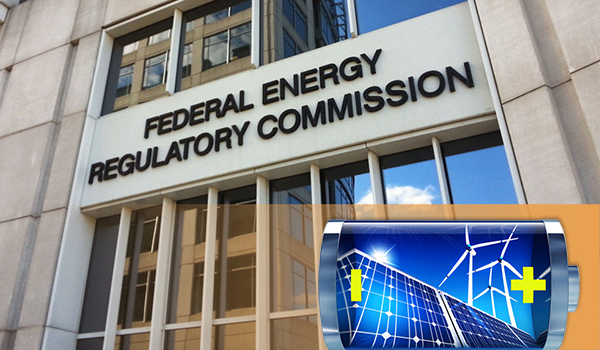
Last Thursday, the Federal Energy Regulatory Commission (FERC) released a long-awaited final order on its storage and distributed energy resource (DER) docket. This is a big step toward opening up the wholesale electricity markets under FERC jurisdiction to advanced energy technologies that have not been allowed to compete. Energy storage gets an immediate boost, as regional grid operators will now have to implement market rules to let energy storage participate. Aggregated DERs, which FERC considered in this proceeding at the urging of AEE, will be on a slower path, starting with a technical conference, but are also headed toward market participation. AEE and our member companies will stay engaged until these markets are truly open to all advanced energy technologies.
In its final order, the Commission provided guidelines for regional transmission organizations (RTOs) to incorporate energy storage, such as batteries, into the wholesale market. The RTOs will have about a year to implement this rule, which is likely to include significant stakeholder input in determining how best to allow energy storage to participate in the regional wholesale markets. As Commissioner Powelson explained, “We have given the RTOs and ISOs significant latitude to develop market rules that work best with existing market constructs and are respectful of regional differences.”
Four of the five commissioners released individual statements praising the unanimous vote. Commissioner LaFleur pointed to ways that wholesale markets have changed to accommodate other advanced energy technologies: “As today’s order recognizes, they were largely designed around the resources that prevailed when they were launched, but have evolved to accommodate demand response, variable energy resources, and other new technologies.” Commissioner Glick also noted that storage can contribute to another major concern of FERC's – reliability and resilience: “where these resources are permitted to participate in wholesale markets, they will enhance the reliability and resilience of the grid while reducing rates.”
On the whole, the final storage rule does not look significantly different from the proposal (aka the NOPR) released in late 2016. AEE was pleased that the Commission took seriously its comments on the NOPR, with over 25 references and citations of our comments included throughout the final rule. For example, FERC expanded the definition of energy storage based on AEE's concerns that it was too narrow. It now describes storage as “a resource capable of receiving electric energy from the grid and storing it for later injection of electricity back to the grid.” FERC did not include entirely behind-the-meter resources that do not inject energy back to the grid as storage for the purposes of this rule – unless RTOs opt to include these resources.
At a high level, the requirements for the RTO tariff design for storage participation include:
- Technical Capability: ensure that a resource using the participation model is eligible to provide all capacity, energy, and ancillary services that the resource is technically capable of providing in the RTO/ISO markets
- Dispatchability: ensure that a resource using the participation model can be dispatched and can set the wholesale market clearing price as both a wholesale seller and wholesale buyer consistent with existing market rules that govern when a resource can set the wholesale price;
- Physical and Operational Character Accounting: account for the physical and operational characteristics of electric storage resources through bidding parameters or other means; and
- Setting a Minimum Size: establish a minimum size requirement for participation in the RTO/ISO markets that does not exceed 100 kW.
At the same time, the Commission announced a technical conference on DERs April 10-11. Although the Commission did not finalize the DER portion of the rule, a two-day technical conference shows real commitment on the part of FERC to explore and understand how aggregated DERs can and should play in the wholesale markets. Ideally, this technical conference will lead to a final rule from the Commission, as these events often do. The Commission has released an agenda for the conference and is currently seeking panelists.
AEE views this storage order and the DER technical conference announcement as major wins for our industry. While we have a lengthy stakeholder process ahead, FERC have provided a pathway for energy storage to be compensated in the wholesale markets, taking down barriers to entry for new technologies. We look forward to working with FERC and the RTOs to ensure that advanced energy technologies have the chance to compete fairly in the wholesale markets.
